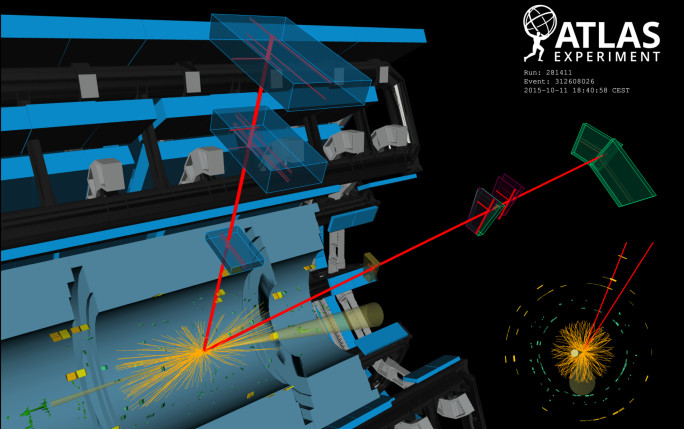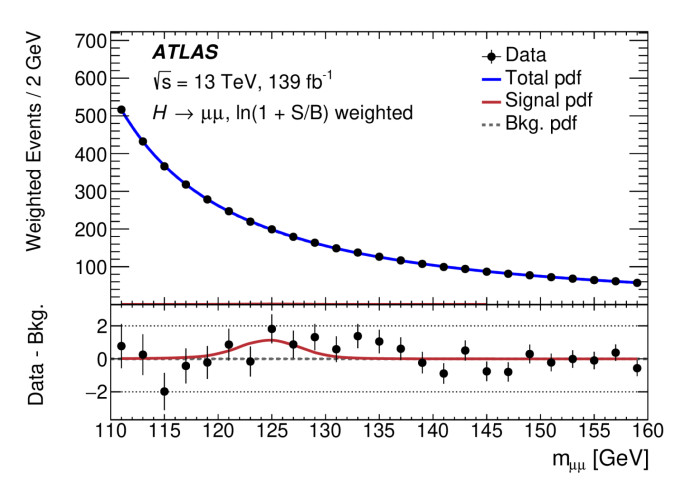LHC experiments announce first indications of Higgs boson coupling to muons with major contributions by Liverpool scientists

At this year's edition of the ICHEP conference, the CERN LHC experiments ATLAS and CMS announced new results which show that the Higgs boson decays into two muons. The muon, a heavier companion of the electron, is the first of the matter particles of the second generation for which there is now evidence that it interacts with the Higgs boson. One of the highlights of the largest conference in the field, the occasion was celebrated in a dedicated CERN press release.
Liverpool physicists working at the ATLAS experiment were instrumental to achieving these results. Staff member Dr Jan Kretzschmar co-leads the ATLAS analysis team and edited the publication now submitted to Physics Letters B. He commented: “It was a huge privilege to lead this high-profile analysis with an international and highly dedicated team and contribute to the analysis development over the last three years. It is exciting to see the first evidence for a new kind of interaction of elementary particles.“ For Jan’s PhD student Hanna Borecka-Bielska the completion of the analysis coincided with the successful finalisation of her thesis and she was chosen to present the new ATLAS results for the first time ever in the ICHEP parallel session.
The Higgs boson is the quantum manifestation of the Higgs field, which gives mass to elementary particles it interacts with. By measuring the rate at which the Higgs boson decays into different particles, physicists can infer the strength of their interaction with the Higgs field: the higher the rate of decay into a given particle, the stronger its interaction with the field. So far, only the interaction with the heaviest particles had been observed. The process of the Higgs boson decaying into muons is however a much rarer phenomenon occurring for only about one Higgs boson in 5000, and had therefore, not previously been seen at the LHC.
The ATLAS spokesperson Karl Jakobs commented: “This evidence of Higgs boson decays to second-generation matter particles complements a highly successful Run 2 Higgs physics programme. The measurements of the Higgs boson’s properties have reached a new stage in precision and rare decay modes can be addressed. These achievements rely on the large LHC dataset, the outstanding efficiency and performance of the ATLAS detector and the use of novel analysis techniques.”
Both the ATLAS and CMS analyses find a rate about 20% higher than what is expected in the Standard Model, however within the statistical uncertainties of the results, 50% for ATLAS and 40% for CMS, this excess is not significant. Together both results provide strong evidence for the Higgs boson decay to two muons. More data to be taken at future runs of the LHC will be required to cross the threshold to the “observation” and test for possible deviations from the Standard Model expectation.
Further information

Image: The invariant-mass spectrum of the reconstructed muon-pairs in ATLAS data. Events are weighted according to the expected signal-to-background ratio of their category. In the top panel, the signal-plus-background fit is visible in blue, while in the lower panel the fitted signal (in red) is compared to the difference between the data and the background model.